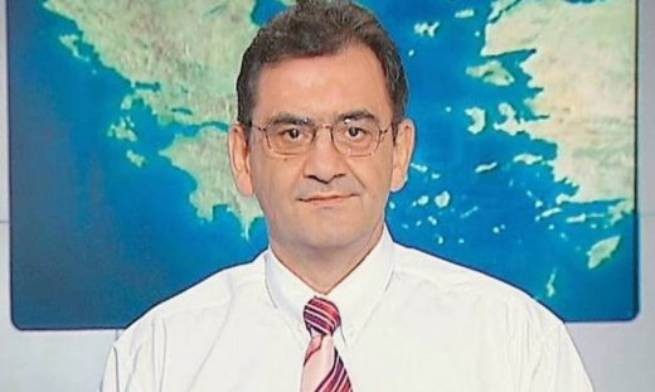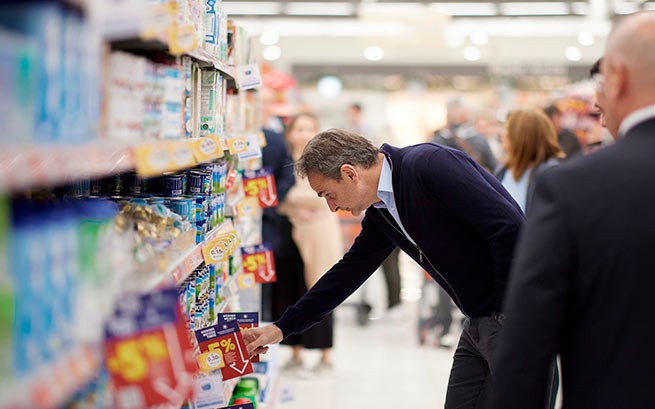The government of Kyriakos Mitsotakis constantly “touts” its economic performance, but citizens feel poorer than they did a few years ago, and this is reflected in the actual figures.
The increase in prices in supermarkets over 1.5 years was 136%, and this figure is truly shocking! The exact same list of products that a consumer bought in January 2022 for 109 euros now costs 257.40 euros.
In detail, in January 2022, the products on the list cost 109 euros. The same products cost €132.86 in March 2022, and in June this amount reached €154. In January 2023 the bill was €178.14. In June last year, the consumer paid 215.33 € for the same products, and today their cost has reached 257.40 €.
In just a year and a half, price growth reached 136%
- The price rise champions are cereals: in January 2022 they cost 1.79, in July they soared to 3.68, in January 2023 they reached 4.77 and today we find them at a price of 4.99 euros – the growth was 178.77%.
- Dishwashing detergent, which cost 6.99 euros in January, rose to 9.23 euros in March last year, to 13.77 in June, and has now reached 15.98 euros – an increase of 129%.
- Also, the price of dishwashing liquid has increased significantly, which in January last year cost 2.97, and today we see that it has risen in price by 3 euros, i.e. 5.98 price tag on the shelf – growth 101%.
- Tuna in oil, which cost 6.88 euros in July 2022, rose to 7.70 euros in January last year, to 8.10 euros in March 2023, and now we see it on the supermarket shelf for 8.56 euros – growth by 25%.
The government is unable to explain, claiming that everything is happening exactly the opposite, and journalist Aris Portosalte on Tuesday morning (21/11) gave his own… “solution”, which is nothing more than “cutting back” food products. “I’m saying… maybe instead of going to the supermarket and pushing a cart or two carts together, we’ll go back to the cart, I’m saying, so maybe consumer behavior will change a little bit.” – said Portosalte and urged TV viewers to buy not a whole watermelon, but a slice…
Published data from Eurostat on the economic situation of Greeks is also revealing: four out of five Greeks with a low level of education characterize themselves as poor. Difference from the average EU huge, since in the same category only Every third European considers himself poor.
“Subjective poverty” is an individual’s own perception of his economic situation
In terms of the level of education of citizens, Greece is at the very bottom of the ranking in all three categories. In 2022, Greece has the highest proportion of people with low levels of education in the EU (81.6%) who are considered poor. This category includes citizens who do not have a secondary education diploma. It is followed by Bulgaria (67.9%) and Slovakia (53.3%). The lowest rates were recorded in Finland (7.3%), Luxembourg (10.0%) and Sweden (11.3%).
In 2022, 29.5% of the EU population with a low level of education will be considered subjectively poor (with a certificate of completion of junior high school, not complete secondary education). This more than three times lower (9.2%) for people with higher education and 18% for people with secondary education (high school certificate without tertiary education).
In Greece, where prices are rising and incomes remain low, the EU has the highest proportions of people with average (high school diploma) and high levels of education who are considered subjectively poor, at 70% and 49% respectively.
Most EU member states reported significant differences between high- and low-educated populations. In 12 countries the difference was at least 20 percentage points (pp). The most noticeable differences were in Bulgaria (47.7 p.p.), Hungary (41.5 p.p.) and Slovakia (39.5 p.p.), and the lowest in Finland (4.5 p.p.). p.), Denmark (5.9 p.p.) and Sweden (7.1 p.p.).
Note that “subjective poverty” – this is the perception of one’s economic and financial situation. This indicator assesses respondents’ perceptions of the difficulties their household faces in meeting financial obligations. The assessment takes into account The household’s material wealth status, including income, expenses, debt, and wealth.







More Stories
Where will Greeks go for Easter: the best domestic and foreign destinations
Fine 1200 euros for the bad habit of Greeks at Easter, who is at risk
UK: human trial of melanoma vaccine started